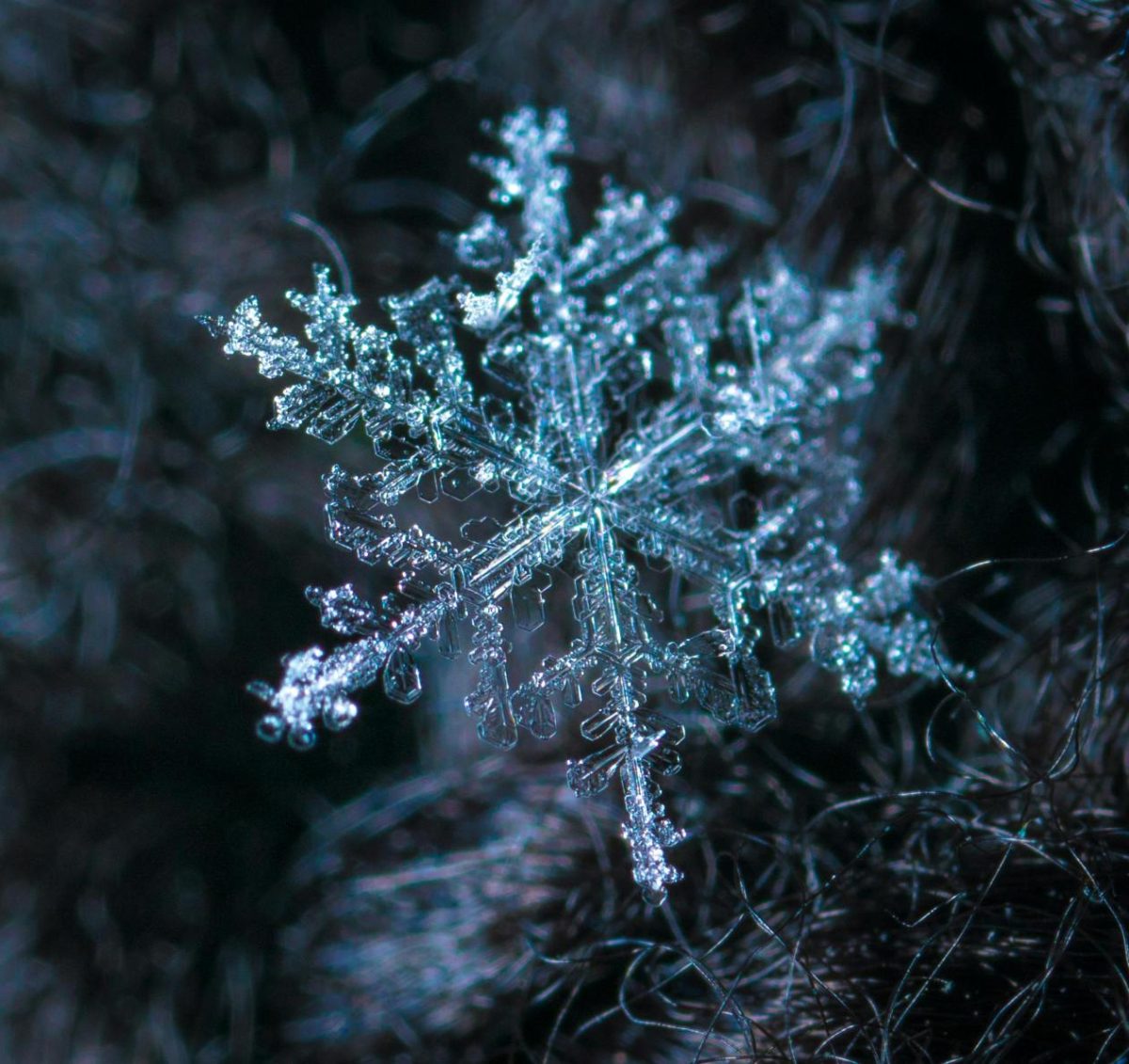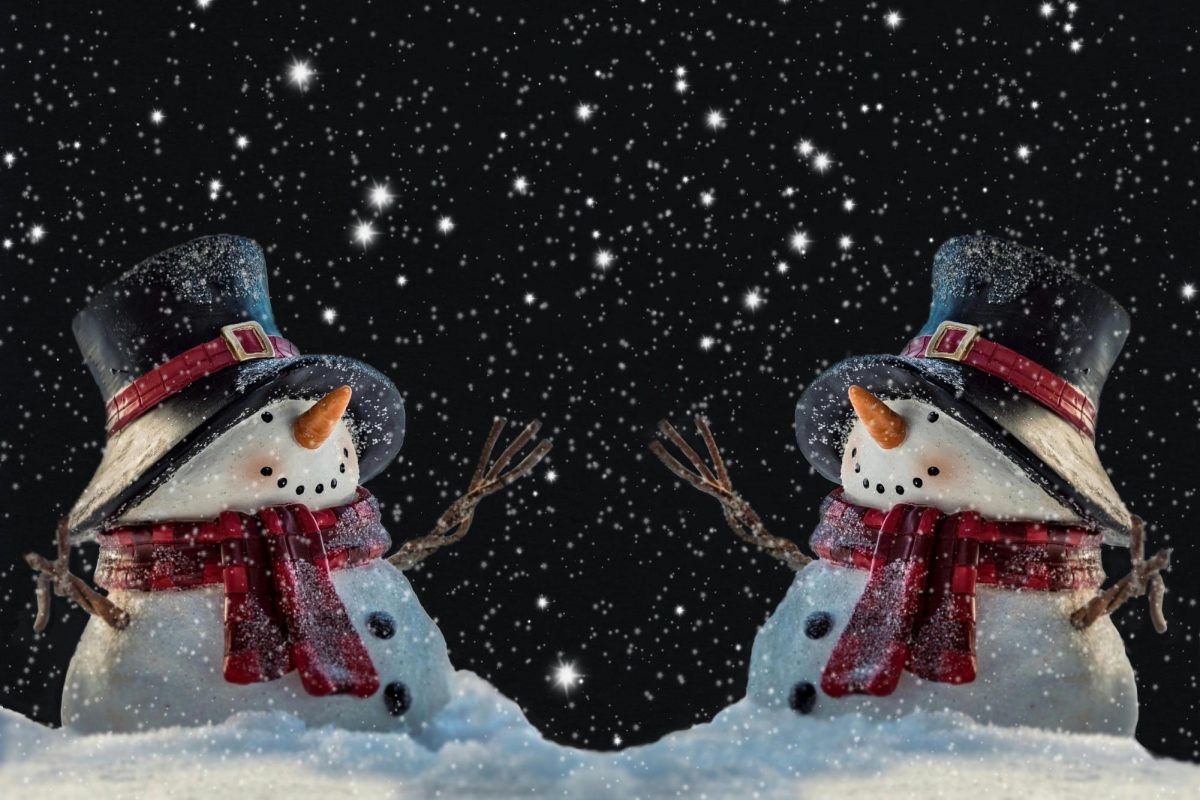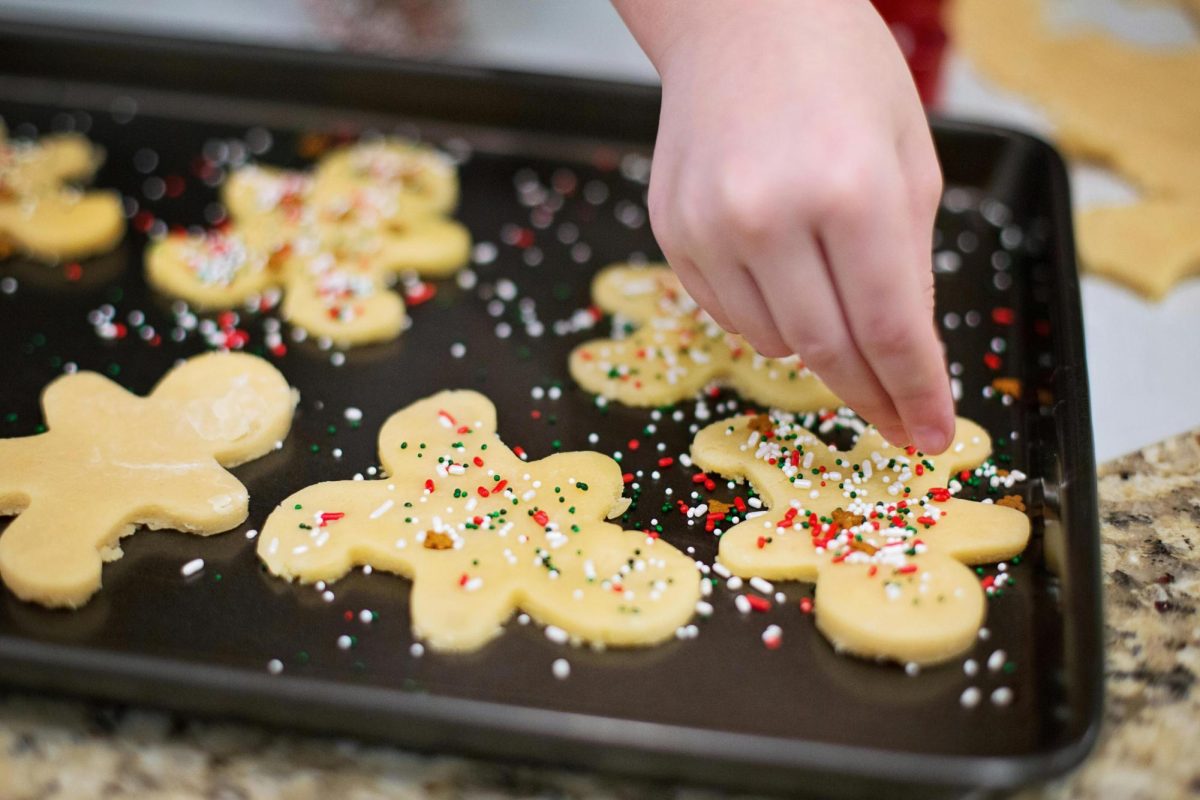Snowflakes are a winter staple all over the world. Not only do they symbolize the season, they convey the spirit and joy of the holiday season.
Snowflakes are formed when extremely cold water freezes onto a dust or pollen particle in the sky. For reference, when frost freezes onto a large object such as a car, the effect is similar yet forms a different and larger pattern because of the area space.
Frost forms based on the positioning of each individual particle and the topography of the surface, meaning that it forms based on how the surface is formed and changes the positions of the particles.
It’s a well known saying that you will never see the same snowflake twice. All snowflakes have six arms or sides. Snowflakes form with six sides because of the hydrogen bonds between water molecules. Sometimes, snowflakes form with twelve sides or arms. Oddly enough, scientists don’t know the cause of this.
The appearance of a snowflake is determined by its journey to the ground and the different conditions it passes through. Because of this, there are about thirty-five categories of snowflakes, and still none of them are the same. Every snowflake travels a different path in some aspect, so they all end up forming in different ways by the time they reach the ground.
With a falling speed of three to four miles per hour, it takes about an hour to reach the ground and they certainly have enough time to create their own original shape.
In European and North American Christmas traditions, snowflakes symbolize purity and hope. They are a loved decoration all over the world, and most people have definitely made a paper snowflake at one point or another growing up.
However, paper snowflakes are not the only activity you can do at home that involves creating your own snowflake.
Growing your own crystal snowflake is a fun experiment for any age. You’ll need pipe cleaners, epsom salt, water, and any tools that will help you through the process.
First, twist your pipe cleaners together to make a six pointed star. Mix together a quarter cup of hot water and a third of epsom salt before placing your snowflakes in the concoction, suspended by some kind of string or fishing line. Cover the container and let it sit in the fridge for a few hours. When you look at it again, you’ll have made your own crystal snowflake.








